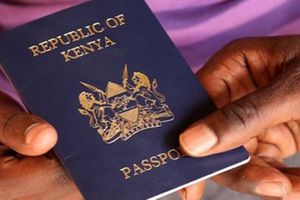Understand risks of bank cards
In last week’s article, we have seen the importance of bank cards in our lives as they offer convenience and versatility.
There are two types of bank cards; Debit cards and Credit cards. There are two ways to use your bank cards; through an Automated Teller Machine (ATM) where you can withdraw cash or through a Point of Sale (POS).
Furthermore, we have seen the dangers of using the debit cards: reimbursement of fraudulent charges on your debit cards, a high chance of being charged overdraft charges, and withhold amounts when using your debit cards at most hospitality service providers.
Last week we also saw the main difference between credit cards and debit cards; whatever you spend on a credit card, you will be required to pay it back by the provider of that credit card, while what you spend on a debit card comes straight from your bank account.
There are some dangers and risks of using a credit card and it is important to understand them to cultivate better usage. Therefore, this week, I will share some dangers of using credit cards.
Temptation to overspend
Studies have shown that consumers spend more when they are paying with credit cards than when they pay with cash.
It is easy and convenient to spend money with a credit card as you don’t feel the “pain” of cash leaving your wallet hence it’s easy to spend more than you can afford to pay back.
The limit on the credit card should be treated as a loan extended to you by your credit card provider as opposed to free money to spend.
So, be mindful of your spending on your credit card to make sure you are not buying more than you can afford and you should consider a monthly budget on how much you can afford to spend on your credit card.
Automated teller machine (ATM) usage
Credit cards can be used on ATMs just like debit cards but with a fee. Credit cards are not meant for cash transactions that’s why whenever you take cash out of the ATM there is a charge.
Taking cash out of an ATM through your credit card is known as cash advance. Most banks discourage customers from withdrawing cash from their credit cards by charging outrageous fees.
The average cash advance fee charged by most banks is six per cent of the amount withdrawn (some banks even charge higher than that) plus daily interest charges on the outstanding cash advance balance the moment it is taken until it’s paid off. You need to avoid doing cash advances at all cost so you won’t get charged astonishing interest rate charges.
Reading your bill statement
Since a credit card is a form of a loan, you are required to pay back whenever you spend and you will receive a credit card bill statement every month.
With many banks pushing toward paperless billing, it’s getting easier to skip looking over your monthly statements.
This is very dangerous because you can overlook erroneous charges from merchants, and also you may miss a chance to notice any fraudulent charges or any forms of credit fraud.
More importantly, ignoring a monthly credit card bill statement makes us complacent in our personal finance by not reviewing and monitoring our spending, hence we stop being in command of our finances which results into not reaching our personal finance goals.
It is vital to read your bill statement and make it a routine every month to ensure you are on the track of your personal financial goals.
To sum it up, for the last two weeks, I have shared the dangers and risks of banks cards, debit and credit cards, which are: reimbursement of fraudulent charges on your debit cards, high chance of being charged overdraft charges, withheld amounts when using your debit cards at most hospitality service providers, the temptation to overspend on your credit cards, cash advances on your credit cards, and not reading your credit card bill statements.
The main purpose of sharing the aforementioned tips is to educate you on how bank cards can be an obstacle in achieving your financial goals if used irresponsibly.




